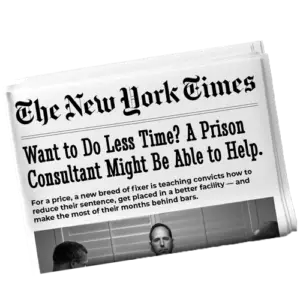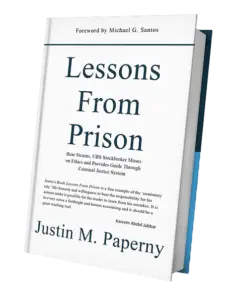When I wrote my judge a letter from federal prison, I didn’t write to say I was sorry. I wrote to show the work. I wrote to create something he hadn’t seen before. That letter became one of many assets I built while serving my time. Not because I thought it would change my past—but because I knew it was the only way to prove I was something more than a line in a PSR or a DOJ press release.
That shift didn’t come naturally. It came from Michael Santos. He told me: “Don’t say it. Show it. Create an asset that doesn’t exist.”
You Cannot Talk Your Way Into Leniency
If you’re under investigation or awaiting sentencing, you’ve probably already said you’re sorry. Maybe to your lawyer. Maybe to your family. Maybe in a brief moment during your plea.
But a judge doesn’t want to hear a speech. Probation doesn’t want a promise. The BOP staff doesn’t care what you say on the day you surrender. They care what you’ve done—and what you’ve documented.
This is where most people fall short. They assume good intentions will be obvious. They tell themselves they’ll prove their growth once they’re closer to release. Or worse, they rely on a vague plan: “I’ll take RDAP. I’ll get a job. I’ll rebuild later.”
That kind of thinking is why many defendants leave months—and sometimes years—of leniency on the table.
Creating Assets Is the Only Leverage You Control
A letter to a judge is an asset. A personal blog that shows what you’ve learned is an asset. A reentry plan that outlines where you’ll live, how you’ll work, and how you’ll stay accountable is an asset. A book—yes, even if you write it in a notebook on your bunk—is an asset.
These things show discipline. They show remorse without saying it. And most important, they show your stakeholders that you’re taking this seriously, not just trying to skate by.
I see it every week: someone reaches out when they’re two months from sentencing, asking what they can do to change their outcome. By then, the time for real work has passed. Judges have already received the PSR. Probation already made their recommendation. There’s nothing left to hand in but another apology—and no one is moved by that.
Most People Wait. Then They Regret It.
I’ve heard every excuse.
“I’ll do the work when I get to prison.”
“I’ll start when I have six months left.”
“I want to focus on my appeal.”
“I don’t want to make it look like I’m just doing this for leniency.”
Those aren’t reasons. They’re delays. And those delays carry consequences.
Judges make decisions based on what they can see—not what you could have done. Probation officers include in their reports what you submitted, not what you meant to finish. And once you’re inside, BOP staff will assess your programming eligibility based on your documentation, not your intentions.
When you wait, you give up any leverage you could’ve built.
This Work Requires Humility
Creating a reentry plan, writing a blog, drafting a letter to the court—all of it requires one thing most people resist: humility. It means confronting the truth of what happened. It means admitting, in writing, that you were responsible. It means asking people you’ve hurt to read something you created—not to win their forgiveness, but to demonstrate effort.
That’s not easy. But it’s the difference between a defendant who prepares and a defendant who reacts.
The ones who prepare build a body of work that speaks for them. The ones who react lean on excuses and end up with longer sentences, more restrictions, fewer programs, and less support when they come home.
When I handed my judge that letter, I didn’t ask him for anything. I gave him proof. And when people ask me now what made the difference, that’s what I tell them.
Are you still relying on words—or are you building something they can see?
Don’t Wait
If you want help identifying what to build and how to use it, join our next webinar on Tuesday at 11am Pacific / 2pm Eastern, or schedule a personal call. Don’t wait until your sentencing date is on the calendar. Start building your assets now.
Justin Paperny



